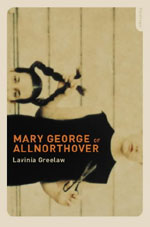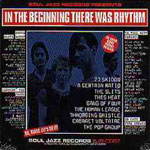Not Quite Right | |

|
Elsewhere on this site, I was intrigued to read the article about details being wrong; I for one - and I'm sure I'm not alone in this - wanted more detail, more specific names, dates, places and instances of cultural misdemeanour. But then I'm like that... But it's not quite that kind of thing that has got me wondering about Lavinia Greenlaw's novel Mary George of Allnorthover [Flamingo, £6.99], although I'm not always convinced the 70s timeline is correct. No, I'm wondering if the general drift of the novel is accurate, if South East English villages and towns were so different from London, where I lived then; if punk fashion and values really spread as she depicts it. Mary George is a teenage girl, already feeling in the wrong place - her father is gone, the village seems to suppress and contain, especially in the drought summer of a late 1970s year. She has her friends, already wears secondhand clothes, but slowly falls in with a new 'arty' crowd - especially a certain boy, Daniel - and out of relationship with her old schoolfriends and village acquaintances. As she moves through the strange English landscape, she slowly learns about new and different sorts of music, how people work, and how to survive the mainstream: there are a couple of wonderful scenes in the hairdressers where Mary gets a Saturday job. The other assistants there casually disregard Mary's gifts of her hippy mother's homemade jam, yet take genuine delight in trying to smarten up Mary with a new hairstyle and manicure. Later, Mary finds she can amuse hew workmates with anecdotes of her 'other' life. These details are what make the book successful. It's a classic growing-up story, full of teenage angst and self-doubt. Towards the end of the book, Mary makes herself into a punk/goth, putting an image together for herself, from things she's read about and seen. But elsewhere the larger themes of the book, and badly handled 'big scenes' are overstated and the detail and mood shattered. A punk concert, initially superbly described and full of teenagers slowly mutating into something else, rock bands realising they must change their hairstyle and how fast they play, suddenly turns into an unbelievable street fight, with cliché riot police everywhere. And above and around all the loves, art students, schoolgirls, schoolboys and the village backdrop that make the book, the BIG, BIG theme comes: the village lunatic, despatched out of care, comes home only to have a vision involving reflected sunshine and Mary George. Initially this just seems another tangle in village relationships, but as the book goes on you're aware that the author feels the need for some kind of big ending, big scene to wrap it all up. And of course we get it: the loony freaks out, finds local tramp and inadvertently kills him. It's exactly what the book doesn't need, and undoes all the careful evocation and description, all the fragile world the author previously created. It's as though she's never read a quiet, subtle book, or is unable to see that the real action has already taken place: Mary George of Northover has had some kind of personal awakening, discovered her self, grown up. And whilst that isn't the most original storyline, it would have been enough. Shame. |

|
Another project that doesn't quite succeed for me is the Soul Jazz CD compilation In The Beginning There Was Rhythm, which I see Kevin has also written about. Obviously, this CD comes a little bit later chronologically than Mary George..., but I continue to be intrigued by how much interest there currently is in the late 70s, punk and post-punk. This CD tries hard to make a case for cultural cross-fertilisation and the entrance/introduction of funk into punk. The trouble is that for me, apart from 23 Skidoo and The Pop Group, this is all very uptight white rock. It may have rhythm, but it certainly hasn't got a hint of soul in it. Most of it seems to me to be more allied to the nervous guitar scrawl of new-wave guitar bands like Television or early Talking Heads than any world musics. There's the synth-brigade Human League and Cabaret Voltaire, scratchy guitars and political polemic of A Certain Ration and Gang of Four, the avant-garde This Heat and Throbbing Gristle, the joyous naiveté of The Slits, the disciplined funk of late 23 Skidoo. Let's be clear: I like most of this stuff, like it a lot [though I'll pass on ACR and Gang of Four, thank you]. But it doesn't make a case for the theory. It needs to be a triple CD to do that, I reckon; needs to spread its net far and wide, and back and forth in time. The Pop Group became Rip, Rig & Panic: now they had funk, as did their mutant offspring Maximum Joy and Mark Stewart's solo work. The Slits need the company of the Raincoats and Essential Logic I reckon - not just as women-led/constructed bands, but as a movement in themselves, a different approach to the punk ethic of taking up the guitar and learning 3 chords. Where are Public Image, surely one of the most rhythmic post-punk bands? What about Magazine and early Simple Minds? I like This Heat a lot, but they don't seem to belong here at all. Sure, they're post-punk, but they assumed none of the punk ethic beyond a willingness to try things out and learn on the job; they were far too musically aware and not the slightest bit naive. Random Hold might have snuck in if you wanted something else; Psychic TV were probably funkier than Throbbing Gristle. The Human League were always pop-rock, never soul or funk. Hula, Chakk or other Sheffield synth bands had far more rhythm than the Cabs... I could go on, but won't. Like Lavinia Greenlaw's novel, this compilation is so good in parts, achieves a certain something, but as a whole is not quite right; ideas and themes are misplaced, overlooked or not thought through... Punk and post-punk were both bigger than this book or compilation might suggest. © Rupert Loydell 2002 |